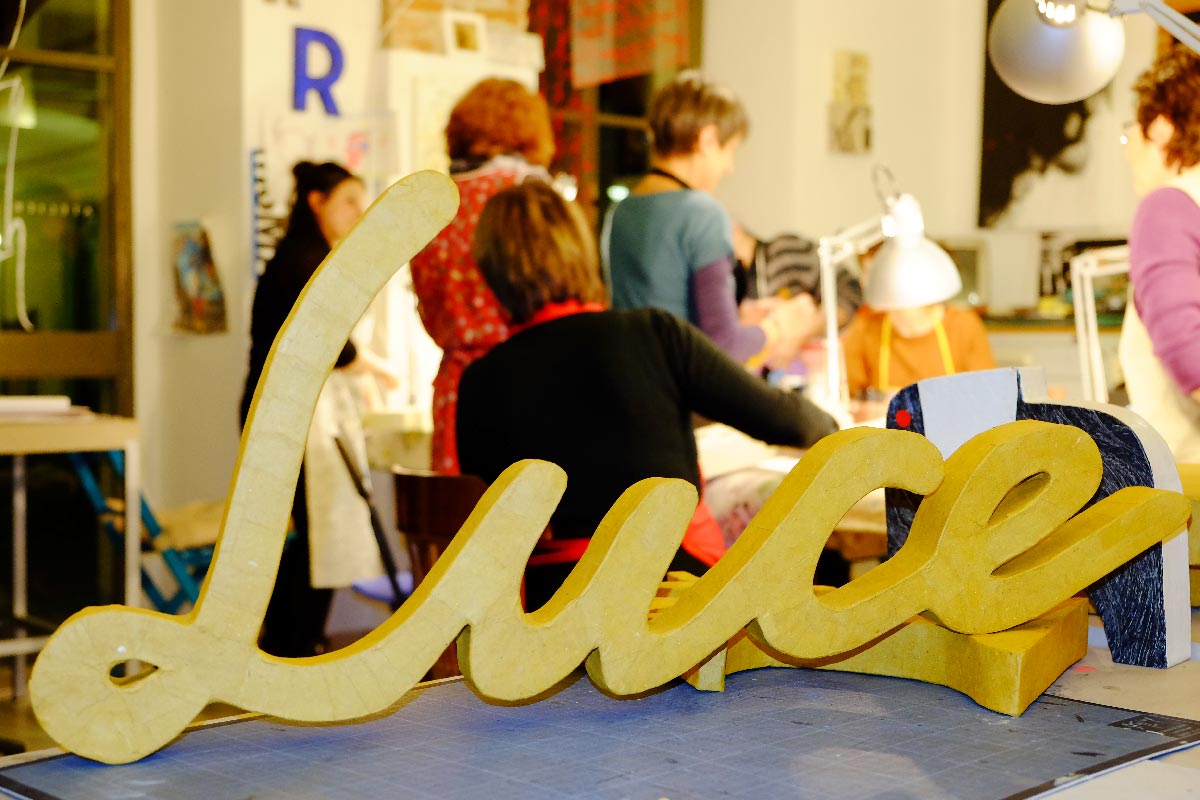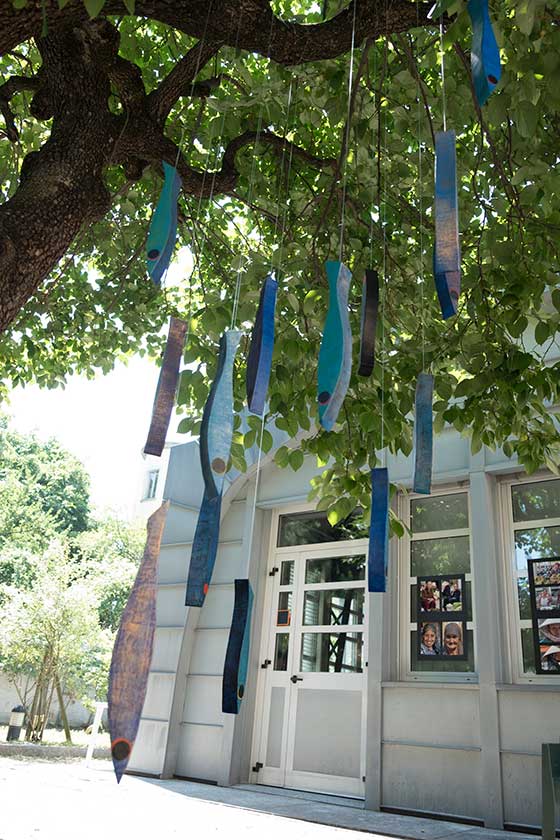Interview with Elena Marsico by Ludovica Liuni of 19 October 2017 on the “Il Fatto Quotidiano”
6 May 2020SAN SALVARIO HAS A GREEN HEART 2017
6 May 2020
Article publié sur "ERODOTO 108" à l'occasion de EUROPEAN PHOTOGRAPHY 2017
Elena Marsico and the half busts of the merchants in via Roma
Half-length silhouettes dominate the cash desk of a greengrocer and a pastry shop; they preside over the liquor shelf in a bar; they talk to their human alter ego in front of elephant-headed Ganesha or what looks like a wedding photo. Now exhibited in the "Sguardi" exhibition at the Comics School, Elena Marsico's works will then find a permanent location in via Roma. This Japanese paper artist, a more refined and defined gluing technique than papier-mâché, was a guest of the neighborhood to which she leaves this beautiful series of artistic reproductions of the faces of the traders as collective artistic heritage. The most striking thing at first glance is the thickness of the half-length busts. The eighteenth-century imprinting of the silhouette, as thin as a sheet of paper, light and a little frivolous like a profile of poor Mozart on the chocolates (he expected everything except to become the emblem of different confectionery brands), totally disappears in the massive corporeity, solid, in the imperious presence of the shapes of the Marsico. They are certainly light because it is paper, but there is no lack of body: the thickness of several centimeters and the defined cut of the portraits, with strong contrasts and black profiles, unites them more to stone or wood than to paper. This tells us something of the art of Marsico which is properly a return to matter. On his site (https://www.cartapazza.it/) Elena tells us about the past as a musician and about her progressive approach to the visual / tactile arts, from tapestries to painting, to Japanese paper. Perhaps it had been an oboe or percussion, direct contact with the physicality of breath and contact would have given her more satisfaction; but the impalpability of the plucked instrument probably did not fill the need to touch, model, materialize an idea. This is how Japanese paper came, which in addition to being solid once glued is also precise, sheet by sheet. Because it is also precision that his creations speak to us, of a search for order and geometry, of pure lines in the chaos of reality. Another experience that Elena Marsico presents to us as fundamental is that of her laboratory with the mentally disabled. Entire currents of twentieth century art have drawn inspiration from the encounter with the irregular sign, with the brut inspiration that unites early childhood and mental discomfort (but it is no longer fashionable to say it, now that every unlikely doodle produced at four years of age it is reproduced, laminated and celebrated as if it were a conscious work of art). Here, however, it is not so much the "primitive" that acts but the need to give shape. Unbridled imagination can well express itself in action painting or other immediate forms, but Japanese paper requires time and patience. Every ghost, even the most disturbing one, must come to terms with the rules of the layers and the physical properties of the glue: concentrating on elegant and dense lines, in clear profiles and in the weight of a light but present material. Is the card crazy? Instead, it is probably much more reasonable than all of us. Or rather, it helps us to transform the incommunicable into the rational, the beautiful (which is of no use because everyone has their own) into an object that imposes itself and forces us to listen to it.
MARCELLA FAVA, 29, from Reggio Emilia, is a photographer who likes Celtic music, chocolate, steaks with mashed potatoes, TV series, fantasy films, tattoos and traveling a lot. She works as a photographer in Reggio Emilia where together with her partner, Simone Chierici, videomaker, she opened The Rainy Island Studio.
LUANA SALVARANI, 44, from Reggio Emilia, ex-philologist, ex-teacher and ex-practicing musician, now a historian of education, where she found a way to gabill her fixation for the western for a serious matter. Waiting for the next ex-prefix, he swims, does not drink alcohol and goes to bed early.





